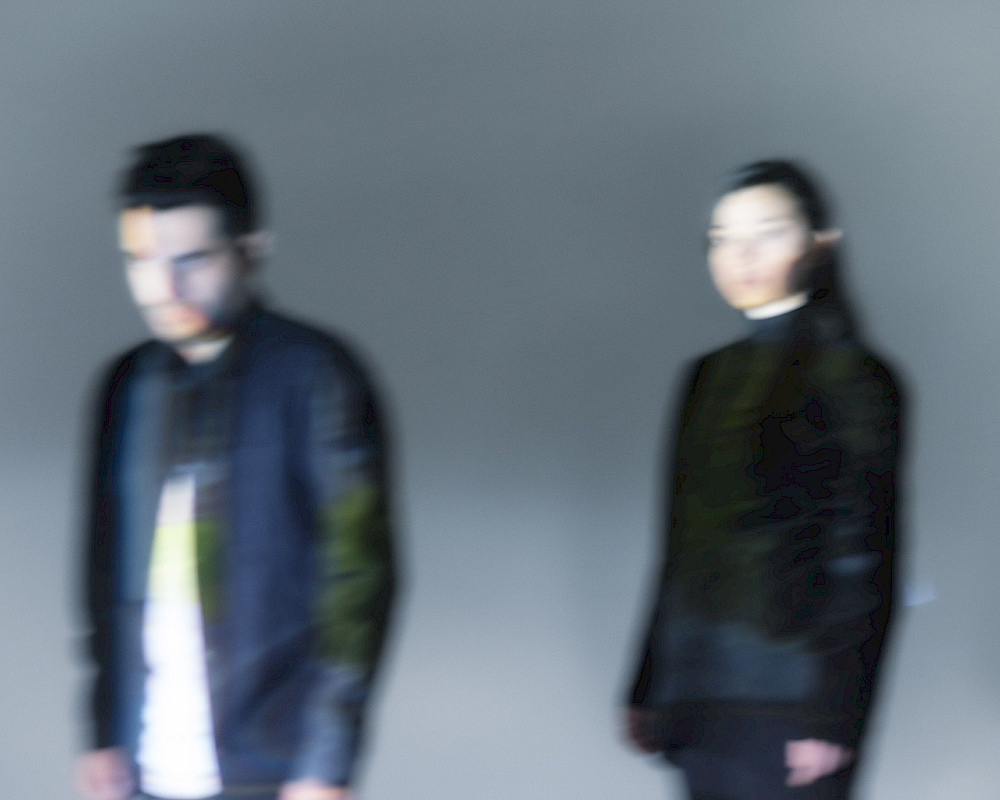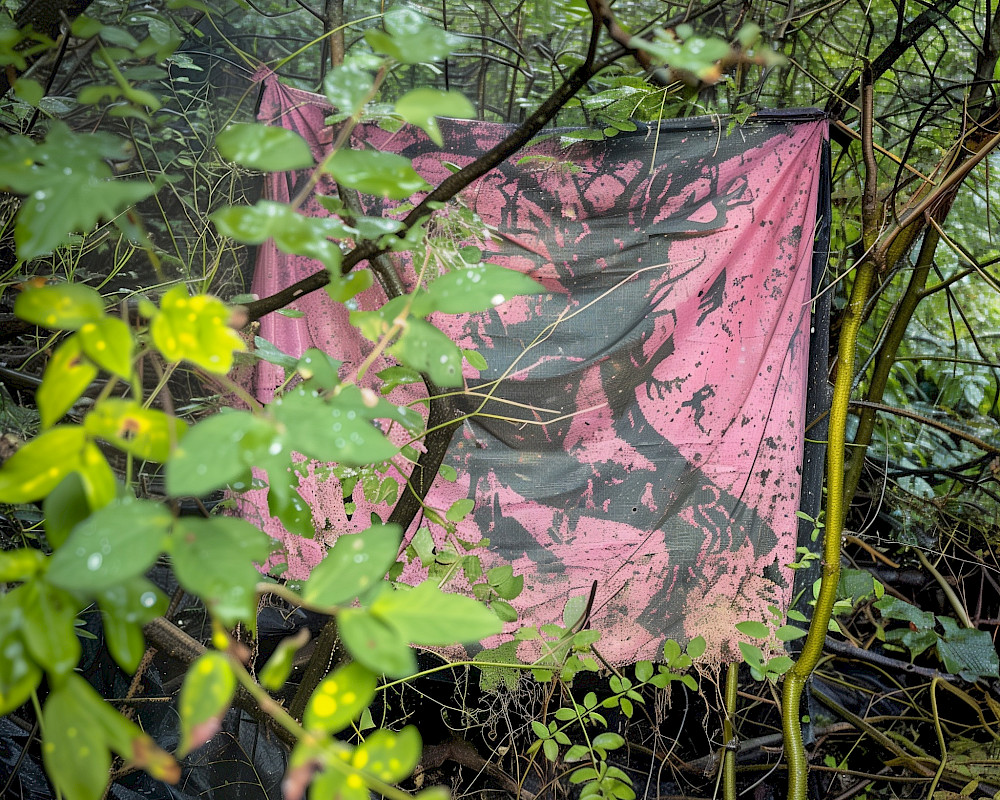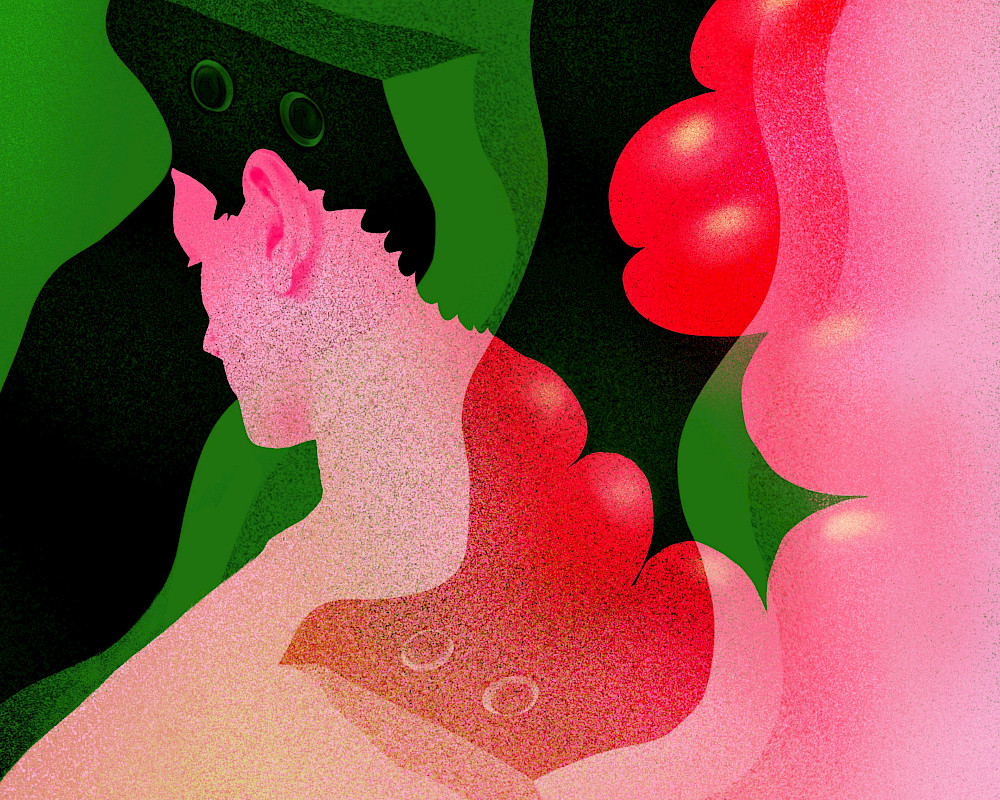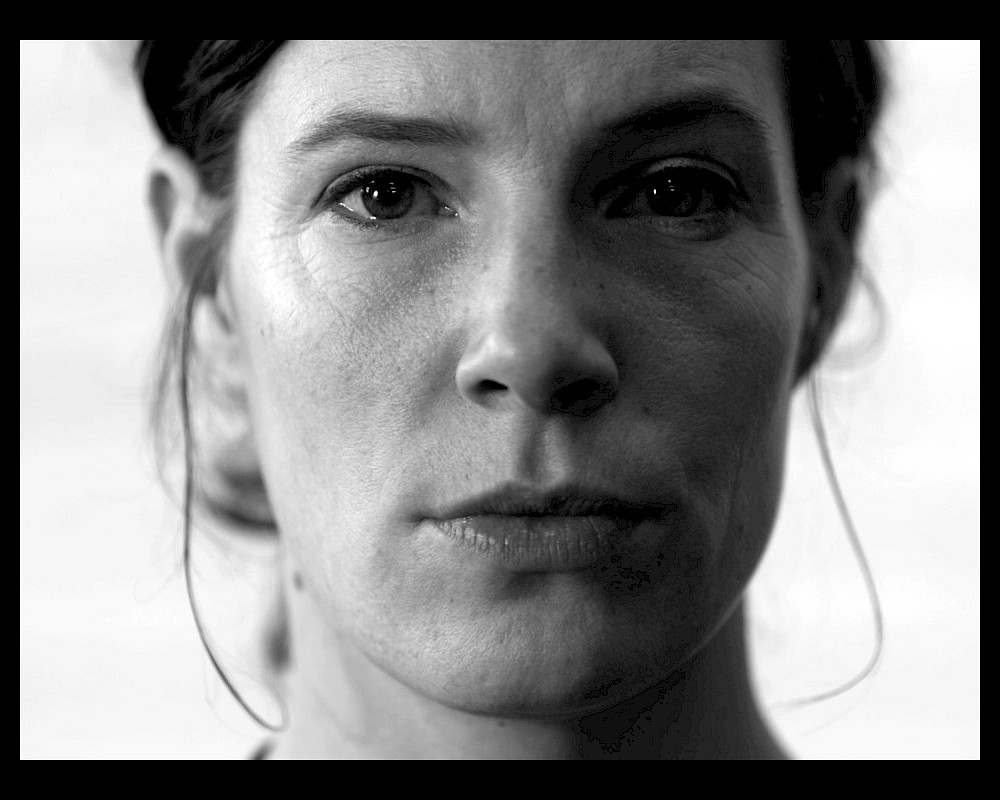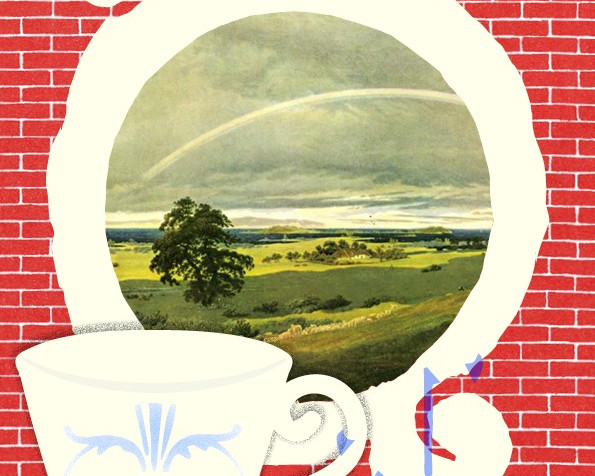feature
Under the Spell of the Sensuous: What David Abram’s Environmental Philosophy Can Teach Us
Hannah Pezzack
Hannah Pezzack is a writer, curator, and DJ characterised by her curiosity toward sound, literature, and the politics of intimacy. Seeking connections through worlds of publishing, printed matter and online radio, Hannah regularly contributes texts to record labels, festivals, and magazines, including The Wire, Dekmantel, and Sonic Acts.
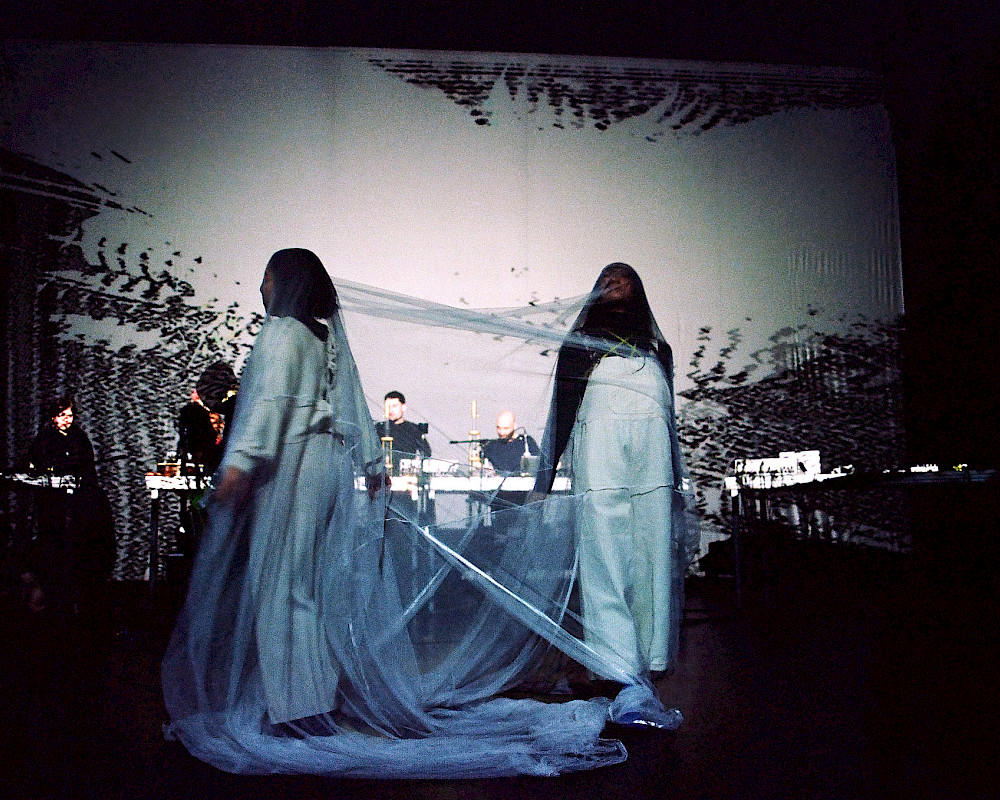
essay
Talent Programmes: Entry Points and Ecosystems
Music journalist Hannah Pezzack dives into the nuances of building a career within the cultural sector, investigating mentorship offered by European festivals, platforms, and institutions, including Het HEM.
Anja Kaiser
Anja Kaiser is a graphic designer and artist based in Leipzig. In her practice, she embraces the relational strategies of ‘dirty typography’ - disrupting, expanding, and joining forces between graphics and typography.
Anja Kaiser teamed up withKnoth & Renner for the identity and concept of the Sonic Acts Biennial 2024. Based on a deep appreciation for technology and its visual echo, the Berlin based design studio Knoth & Renner work on the intersection of digital culture and graphic design.
24
min read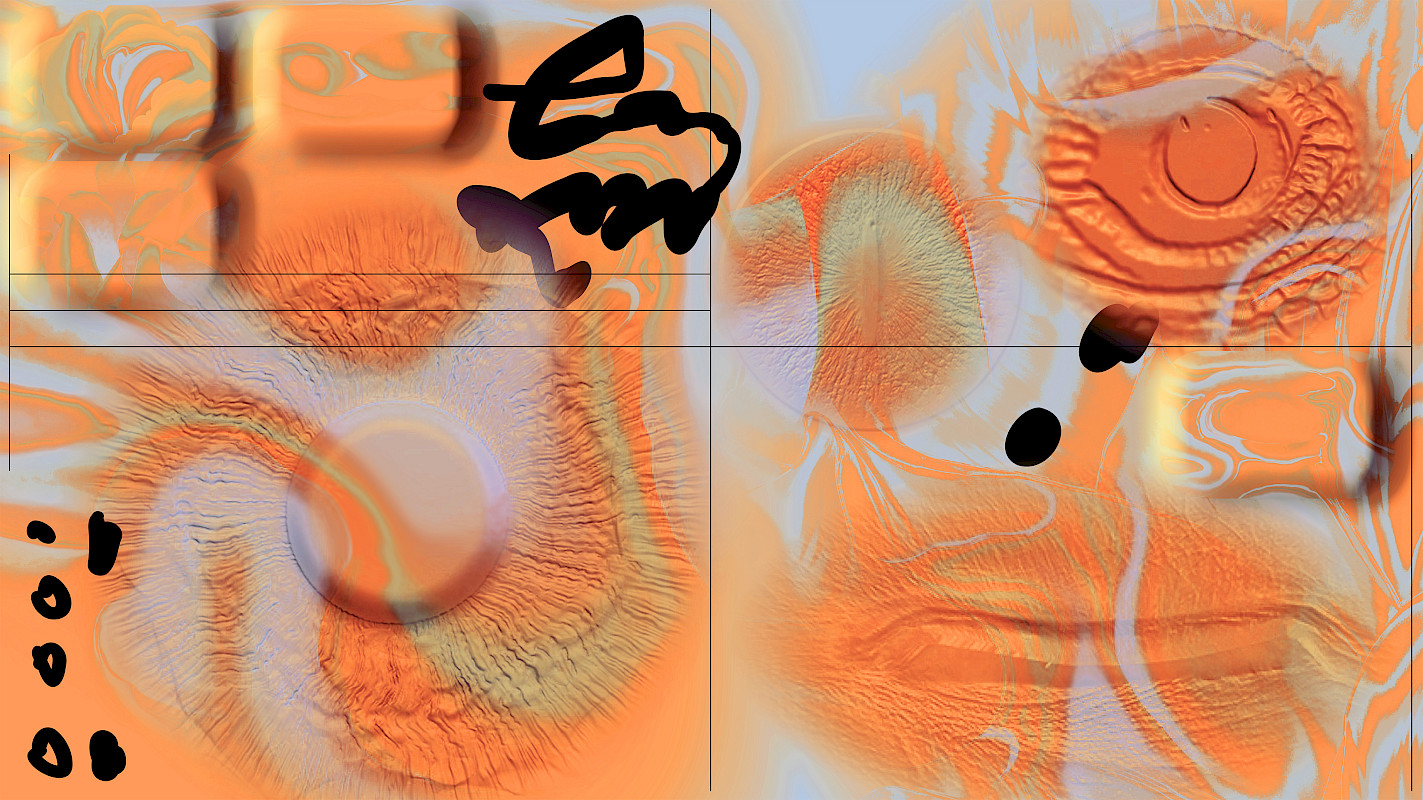
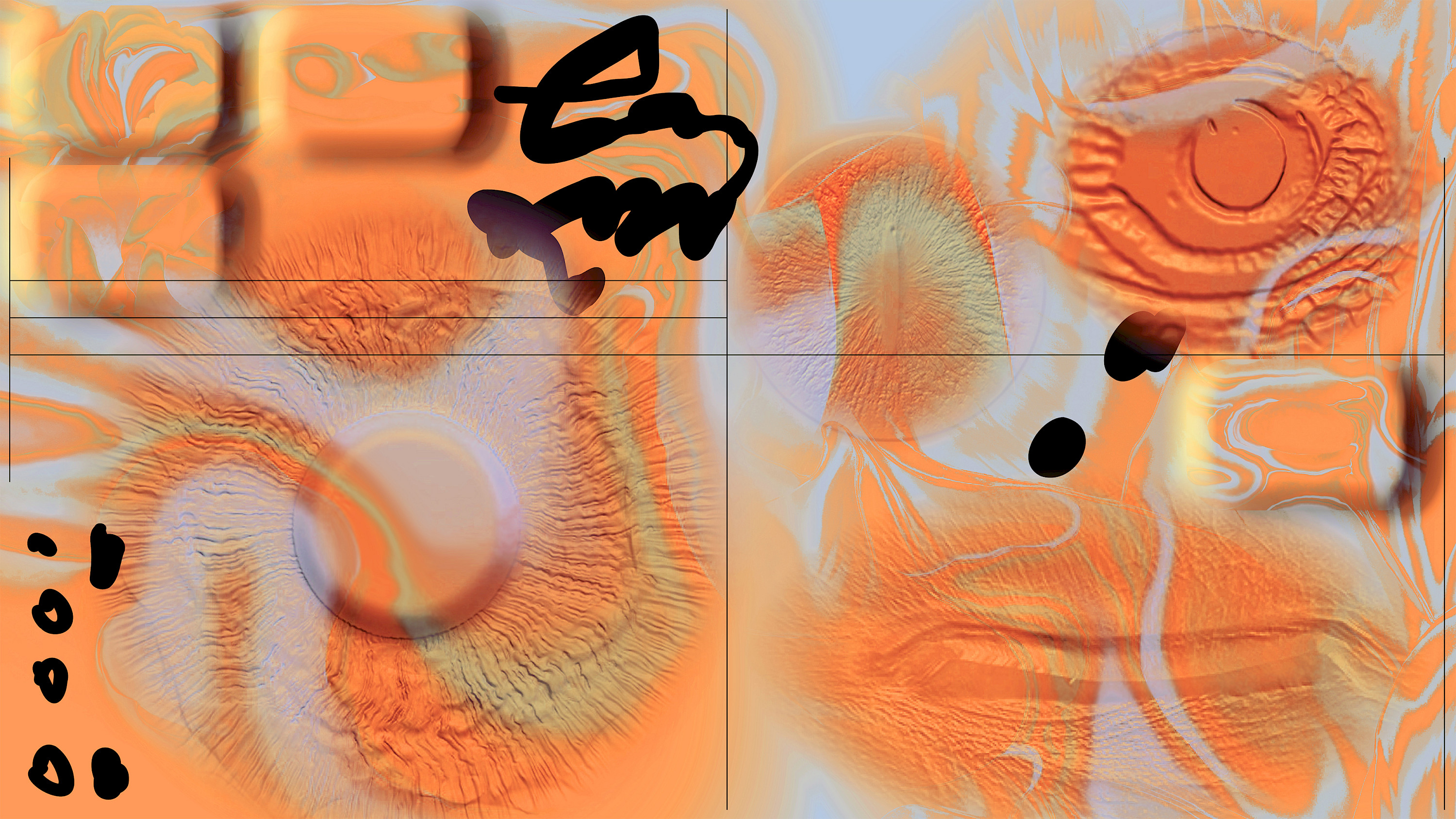
There is “a sensuous world”, writes the ecologist, philosopher, and magician David Abram, “that has been waiting, for years, at the very fringe of our awareness – an intimate terrain infused by birdsong, salt spray, and the light of stars.”(1) It is this world, deeply felt and interconnected, that we must attune to and re-orientate ourselves towards. In his landmark book The Spell of the Sensuous (1996), Abram argues that humankind has long been cut off from earthly magic – the taste of the wind, the stories of stones, and many languages of water. At the centre of his work lies an irrefutable observation, that life on this planet is not individualistic but exists as endlessly interwoven ecosystems connected by touch, intimacy, and interdependencies.
The Spell of the Sensuous is a pivotal text in the field of environmental philosophy. Intertwining perspectives from anthropology, phenomenology, linguistics, cognitive psychology, ecology, and folklore, it exposes the relationships between culture and context, language and landscape, self and other. Abram’s historiographical research unveils how Western thought since Plato has come to be dominated by abstraction – the pursuit of rational ideals above all else. This epistemological tradition holds contempt for the fleshy, felt realm of experience. Consider René Descartes' infamous line, I think, therefore I am. Enlightenment philosophers asserted that evidence of one's being can only be provided through rational, logical thought.
Only I, and other things with the capacity to reason as I do, have real existence and therefore moral worth. The body is cast in binary opposition to the mind, and humans are hierarchically distanced from all other objects, animals, and plants. Subverting this separation, Abram proposes rethinking existence as entangled, coining the now-ubiquitous phrase ‘more-than-human’ to denote the swirling, multiplicitous universe of lively beings, insects, bacteria, and phenomena that exist on the edges of perception.
Diving into a close reading of The Spell of the Sensuous, my examination of the text coincides with the Sonic Acts Biennial 2024 – a prominent arts, culture, theory, and technology gathering unfolding in and around Amsterdam from 2 February to 24 March 2024. Taking its title and thematic focus from Abram's book, the Biennial provides a fertile ground for exploring the enduring relevance of his ideas. My inquiry was first drawn to points of tension and divergence – while Abram is thinking primarily about the evolution of language, Sonic Acts focuses on synthesised sound. Abram regards technology negatively, arguing that man-made machinery hinders our connection with the natural world. Meanwhile, Sonic Acts has embraced digital advancements, collaborating with electronic musicians, video artists, and software developers to realise multi-disciplinary programmes. As I uncover, these approaches are not entirely contradictory but instead allow for new ideas to flourish across fault lines. Along the way, I reference environmental theorists and sonic practitioners including Pauline Oliveros, Dana Luciano, and Donna Haraway, whose insights allow me to further untangle The Spell of the Sensuous.
In the initial part of this essay, I visit Zone2Source, an art venue nestled in Amstelpark and among the various sites hosting the Biennial. There, I attend A.I. Worldings, an event illuminating the transformative potential of recording technologies and machine learning in redefining our connection with the environment. I delve into artworks such as Jez riley French and Pheobe riley Law’s Moss Listening, as well as Farzané and Arash Akbari’s collaborative piece Embedded/Embodied, which employ sophisticated software to engage audiences with organic elements and their surroundings. Reflecting on 'animism' – a pivotal concept in Abram's work – I navigate the intricate connections between agency, language, and what has long been regarded as ‘inanimate’, such as rocks, lakes, and weather patterns. Throughout history, human speech has often been wielded to assert our superiority, yet new technologies are revealing complicated modes of communication among animals and plants. For example, we have learnt through algorithmic processing that bats have dialects and speech patterns just as complex as humans, demonstrating that we are just one of a multitude of speaking, thinking, socially developed species.
In the latter section of this essay, I turn to grief; to the act of mourning that frequently transcends language. Reflecting on my personal experience of loss – the sudden passing of my father – in a time marked by mass extinction, conflict, and pandemics, I contemplate the recurring motifs of birth and reincarnation in the 12-hour performance TRANCE and Astrida Neimanis' porpoise corpses, featured in her presentation at the Sonic Acts symposium. In places where words falter, new meanings and ways of being can emerge. Grief extends beyond the cognitive sphere; like feelings of love, wonderment, or physical pain, it brings us into direct contact with the body, defying easy articulation. Death is furthermore a universal experience that connects us to all things that have ever been, binding us to cycles of decay, renewal, and transformation.
The Body is a Portal
The initial chapters of The Spell of the Sensuous, conveyed through gorgeous, prosaic writing, describe scenes from Abram’s ventures into nature, from the Himalayas to the Indonesian jungle, to a foggy valley near his home in rural America. In one such anecdote, he describes watching a raven soaring in the distance. As he follows it with his eyes, he feels the stretch and flex of its wings in his muscles, “its sudden swoop toward the nearby trees is a visceral as well as a visual experience. The raven’s loud, guttural cry, as it swerves overhead, is not circumscribed within a strictly audible field – it echoes through the visible, immediately animating the visible landscape with the reckless style or mood proper to that jet black shape.”(2) In this synaesthesia-triggering encounter, the various senses – sight, hearing, and touch – converge, connecting the perceiving body to the perceived animal.
This articulation of dispersed sensing, where the different organs – the eyes, ears, skin, and brain – are not separable but an assemblage of connected membranes, resonates with sound artist Pauline Oliveros’ concept of ‘deep listening.’ At once a practice, methodology, and philosophy, deep listening can be understood as “listening in every possible way, to everything it’s possible to hear, no matter what you are doing.”(3) So much, after all, is lost to the white noise of our existence. But by tuning in – by noticing one another and our environments differently – we can embody a heightened state of awareness. A core component of Oliveros’ approach is that it's not just the ears that hear, but the ‘whole body’. In one of her listening exercises – individual or group scores for playful, sonorous engagement – she tells participants to “Take a walk at night. Walk so silently that the bottoms of your feet become ears.”(4) These sonic meditations embrace the physicality of sound, porously perceived as vibration through all parts of the self. Here, the body is itself a technology – a tuning fork or fleshy apparatus for feeling and harmonising. Oliveros' exploration of listening aligns well with Abram's ideas about speech and the senses, allowing his work to expand into new dimensions related to sound and sonic interaction.
Here, the body is itself a technology – a tuning fork or fleshy apparatus for feeling and harmonising.
More-than-Human Listening
At Zone2Source, as part of A.I. Worldings, father-and-daughter duo Jez riley French and Pheobe riley Law are performing their soundwork, Moss Listening. Outside, a storm is raging – the wind violently shakes the trees and rain hammers against the gigantic glass walls of the venue. Backdropped by the noise of the weather, the artists are listening intently. Strewn across the space, and dotted between the audience who sit on cushions next to the octophonic speaker system, are piles of brown-green moss. Renowned for his specially built, adaptive microphones, riley French has plunged hair-thin probes into the lumps of tangly Sphagnum, Barbula indica, carpet tufts of Hypnales, and cushion moss. Channelled back to a laptop and manipulated live, the ASMR-tingling reverberations are diffused across 8 channels – the multidimensional sound migrates through the space, panning across my body and eardrums.
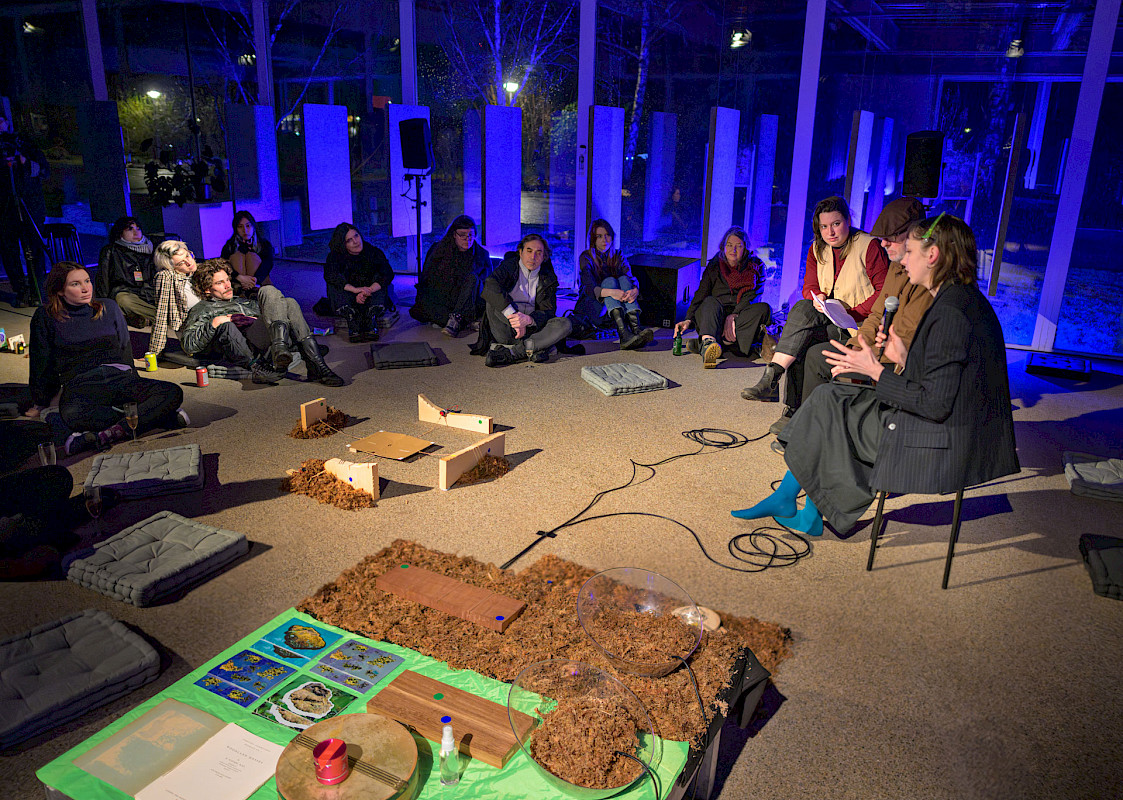
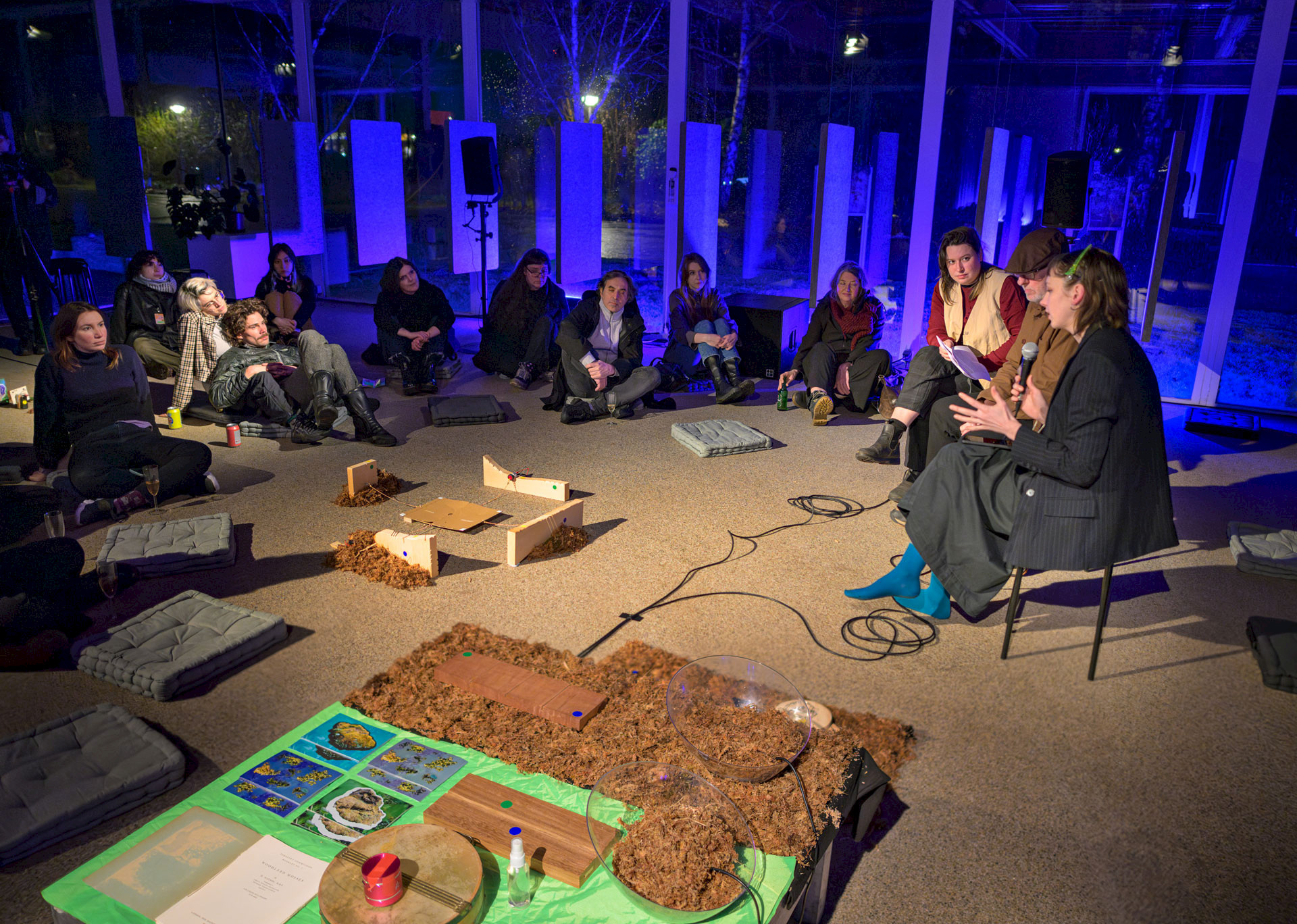
As they explain, the duo are attuning to the ‘micro sounds’ that the moss makes: rehydrating, expanding, vibrating, pulsating. “We’re interested in the radical act of listening,” riley French says. “Listening as a way to access the hidden world of moss. It is a world beyond the human, full of tiny sounds – sounds that other animals and creatures can hear, but that we cannot. It is important to think about what exists outside our perception. When we talk about ‘saving the planet’ it is not only our world – the human world – that needs to be saved.”(5) In other words, when it comes to climate justice, it is essential to remember that we are but one of many speaking, living, animate species on Earth – a fact that is easy to overlook when many of our fellow inhabitants exist on the peripheries of our awareness. Revealing the limits of our corporeal sensorium, in Moss Listening, microphones are a conduit to listen and turn attention towards the more-than-human.
An interesting tension within The Spell of the Sensuous is Abram’s wariness towards technology. While he does not call for wholesale renouncement, he is concerned about how manmade devices are thwarting an intimate relationship with nature. As he argues, “machine-made objects commonly teach our senses nothing further; they are unable to surprise us.”(6) Unencumbered by machinery we can hope to reawaken our base, animal sensibilities – “our skin rippling with sensations as we palpate the surroundings with ears and eyes and flaring nostrils" – allowing our body to become animated by the larger Body of the land; “the wider Flesh of the breathing Earth.”(7)
It is therefore difficult to imagine that Abram would find Moss Listening convincing as an ecological artwork. Throughout The Spell of the Sensuous, he urges us to experience nature unfiltered – without any tech between us and the landscape. In his view, technology merely extends specific parts of the human anatomy; microphones enlarge the ears, and the camera lens functions as an enormous eye. According to Abram, a sense of wonder can only be invoked through contact with what significantly differs from ourselves. Consequently, these gadgets can inspire momentary, fleeting excitement but true, profound awe and enchantment can only be achieved through unmediated interactions. Yet far from being a barrier, the intricate set-up of Moss Listening opens up a door to a submerged, tactile universe. Abram might regard aspects of the work as simply replicating or mirroring the nervous system, flattening our encounters with the environment into human-centric experiences. But the software and impressive, surround-sound setup illuminates the sonorous, speaking plantlife that exists just beneath our feet – a complex ecosystem that thrives outside of the human realm, operating according to its own infinitesimal logics.
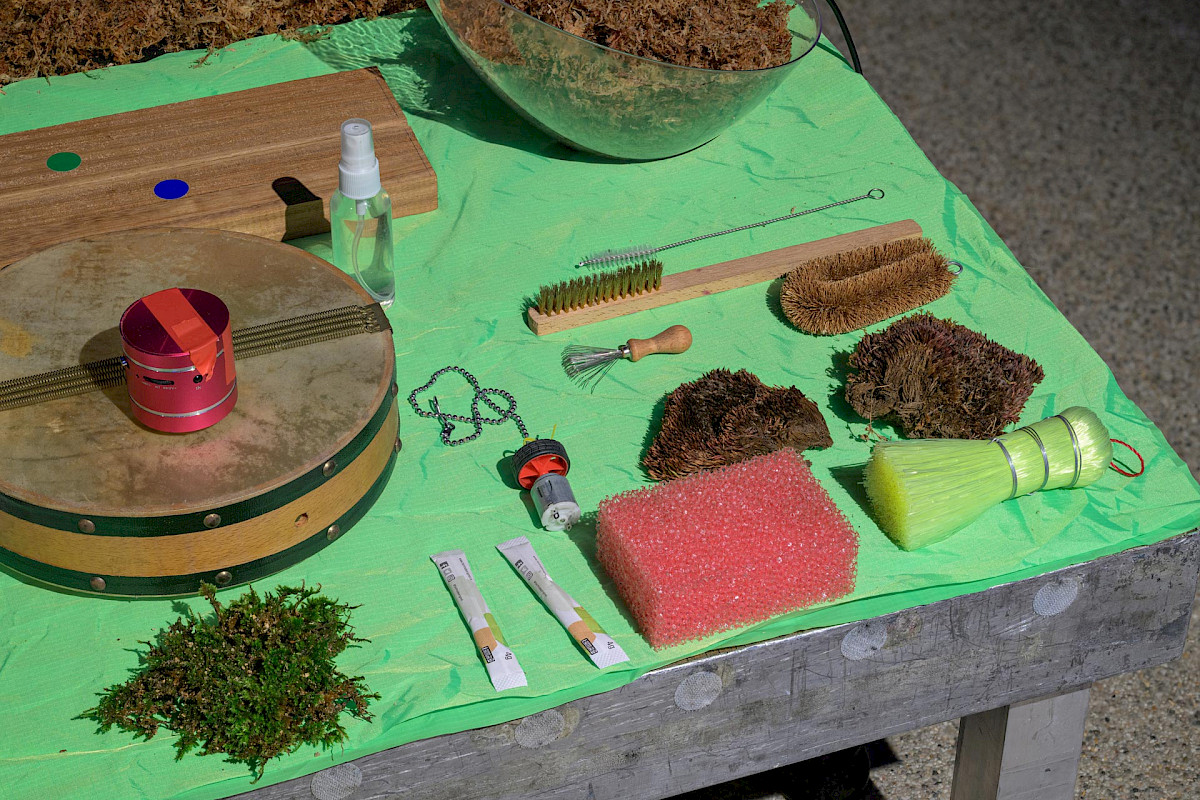
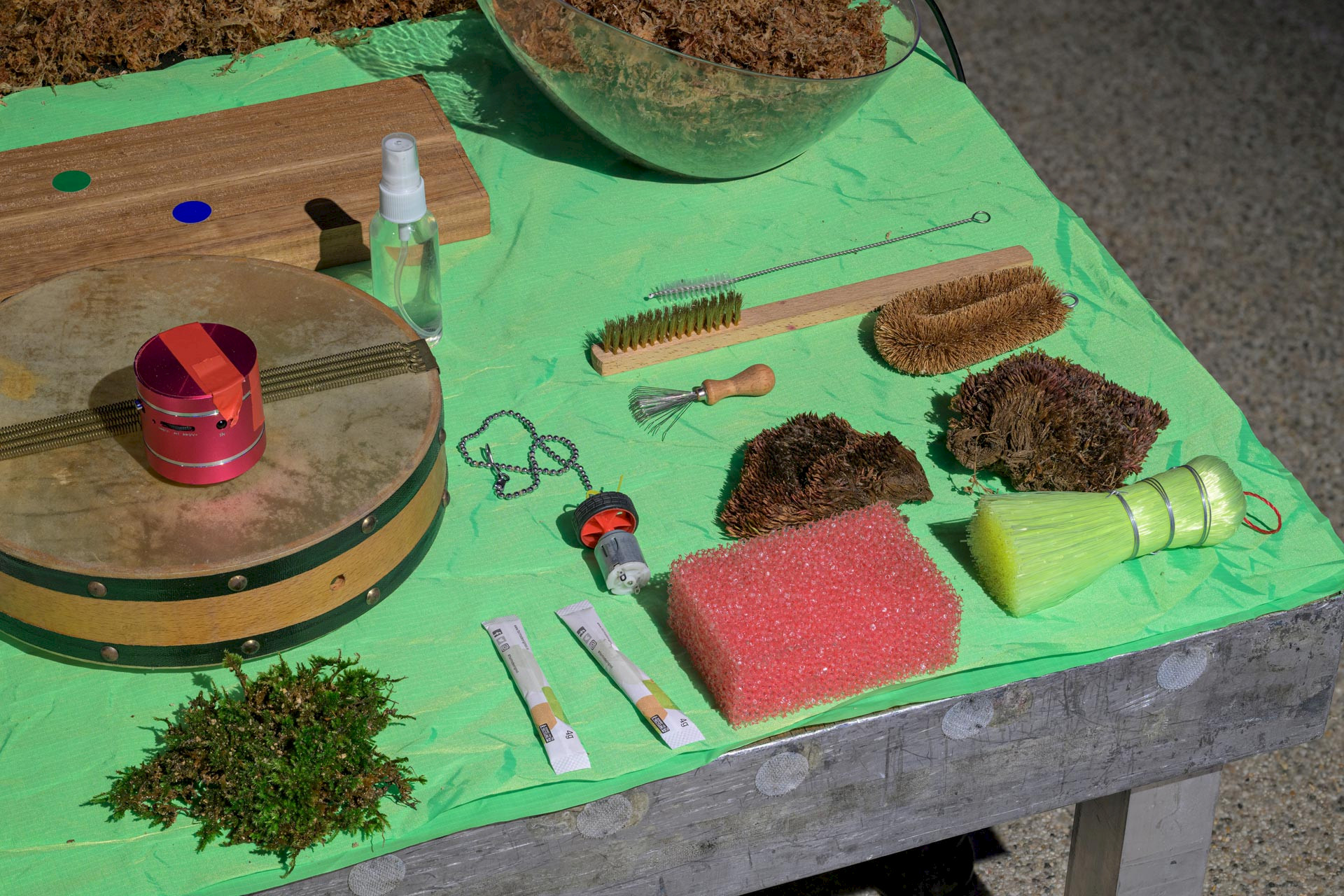
Tech-Optimist
In her 2022 book, The Sounds of Life: How Digital Technology Is Bringing Us Closer to the Worlds of Animals and Plants, the academic Karen Bakker considers the capabilities of A.I. Bat echolocation was discovered nearly a century ago, but recently have researchers begun deciphering the sounds that bats make for other purposes. By recording many hours of bat vocalisations and decoding them using A.I. algorithms, bats were revealed to have highly sophisticated ways of communicating and relating. Not only do they hold grudges, but also speak specific dialects and babble to their young in 'baby voices' just like humans do. Bakker is careful to warn that technology alone cannot save us, but it is one of many tools that might help us understand the linguistic complexities of other creatures, disturbing our place as the planet's only sentient species.
Taking manifold forms at the Sonic Acts Biennial – including as an interactive virtual sound walk, commissioned and showcased as part of The Couch – artists Farzané and Arash Akbari’s collaborative piece Embedded/Embodied encapsulates the unpredictable, speculative potential of A.I. The work explores how an artificial improviser might gain knowledge through sonic interactions with its environment. The A.I. agent captures and processes sounds from its surroundings, generating responses that shape its understanding. These interactions result in emergent musical behaviours, offering new possibilities for multidimensional auditory engagement. During A.I. Worldings at Zone2Source, Akbari explains how Embedded/Embodied operates,
“I don’t understand the binary thinking around A.I. On the one hand, some academics are very concerned – they think it's the end of everything as we know it. On the other hand, there are a lot of tech optimists who imagine it will save us. Personally, I find working with black box A.I. the most interesting because it evades binaries altogether. It is an impenetrable system which arrives at conclusions or decisions without providing any explanations as to how they were reached.”(8)
Black Box AI runs according to its own rationality, coming up with data points that are obscure or surprising to the human mind, which can help us get out of entrenched ways of knowing. Akbari’s observations point to a way of engaging otherwise – we can navigate the intricate workings of the planet without the need for absolute mastery, embracing uncertainty and opening ourselves to unexpected insights and interlocutors, be they human or more-than.
Anthropocentrism
Published at a moment when the urgency of climate collapse and mass extinction was beginning to intensify in Western collective and artistic consciousness, The Spell of the Sensuous contains many of the seeds of present-day environmental thought. During the late 1980s and early 1990s, a flurry of texts, including many notably authored by feminists such as Donna Haraway, Val Plumwood, and Vandana Shiva Behan, began to assert the links between ecological crises, colonialism, and patriarchal violence. These works critiqued anthropocentrism or the pervasive belief that only humans possess intrinsic value, as a crucial justification for our exploitation of nature. The doctrine of anthropocentrism asserts that only humans, with their capacity for thought, reason, and language, are sentient. However, as Abram makes clear, the natural world is teeming with voices – from the minuscule vibrations of moss to the howls of wolves, the buzzing of bees, and the songs of humpback whales. He writes: “...along with the other animals, the stones, the trees, and the clouds, we ourselves are characters within a huge story that is visibly unfolding all around us, participants within the vast imagination, or Dreaming of the world.”(9)
Amongst the first anglophone, ecological thinkers to introduce the concept of ‘animism’ into an academic context, Abram draws attention to Indigenous cosmologies that regard all material phenomena as imbued with agency. For animist cultures, there are no categorical distinctions between spiritual and physical realms, and sentience exists not only in humans but also in other animals, plants, rocks, and geographic features, including mountains and rivers. For instance, in the chapter, ‘In the Landscape of Language’, he evokes knowledge harboured by the Koyukon people, an Alaska Native Athabascan tribe, who warn of treating weather patterns with respect and avoiding remarks that might offend it. This is especially true of cold, which has great power and is easily provoked into numbing fits of temper. All things can hear and understand our speaking, for all things are capable of speech. Even the cracking sounds made by the new ice on the lakes are a kind of earthly utterance, laden with meaning. A Koyukon elder is quoted as remarking that, “In fall time, you’ll hear the lakes make loud, cracking noises after they freeze. It means they’re asking for snow to cover them up, to protect them from the cold.”(10)
Attentive about entrenching primitivist or monolithic interpretations of first peoples, we must also not forget that animist tendencies are present within Western European languages too. As Abram points out, all language carries a trace of onomatopoeia. We often refer to the ‘babbling’ or ‘chattering’ of brooks and English words used to describe surging rivers like 'rush,' 'splash,' 'gush' or 'wash' conjure the sound of water itself. Furthermore, as any poet knows, the significance of words extends beyond objective definitions to encompass weight, cadence, and form that convey crucial affective meanings. In fact, according to the hypotheses of many evolutionary linguists, our capacity to communicate originated from direct, sensory experiences. This legacy persists in exclamatory phrases like 'Wow!' or ‘Ouch!’ In this way, we see that language is not a purely mental phenomenon, but a sensuous, bodily activity rooted in carnal reciprocity and participation. Our modes of expression and ways of speaking have likely been shaped by a variety of gestures, sounds, and rhythms extending beyond those of our species alone. In essence, if human language emerges from the interplay between our bodies and the world, then this language 'belongs' to the animate landscape as much as it 'belongs' to us.
Climate Grief
While The Spell of the Sensuous might come across as a little convoluted or conceptual to some, Abram also speaks directly to the experience of being alive in the world. Most people can attest to the replenishing effects of listening to the rain or watching the sunset. Personally, during difficult times, I often find myself longing to reconnect with the sea. The act of walking along a shoreline, where my footsteps forge a harmonious rhythm with the ebb and swell of the waves, is profoundly calming. Last year, at the tail-end of pandemic-induced lockdowns, my father died from complications from coronavirus. It was a sudden, unexpected loss which left me struggling to leave the house. In the Spring, my then-partner took me on holiday to Veluwezoom, a national park located on the central edge of the Netherlands, close to Germany. Camping on the endlessly flat fields, covered in purple heather and grazed upon by imported ginger-haired Scottish cattle, we witnessed the alignment of two rare astrological conditions – a lunar eclipse and supermoon during the same night. While walking back to our campsite at dusk, an otherworldly orb rose in the sky behind us, four times larger than usual, and gradually turned a deep, demonic red. The blood moon reflects light from the planet’s surface, hence its vermilion colour. We watched in awe from the edge of a field of rapeseed, the yellow flowers in contrast with the eerie blue of the evening sky and celestial red presence above us. Later, in the early hours of the morning, above our tent, the moon vanished entirely, swallowed up by the curvature of the Earth. After this experience, having spent months walled-off in grief, I started to return to myself, to feel the ground beneath my feet.
Later, in the early hours of the morning, above our tent, the moon vanished entirely, swallowed up by the curvature of the Earth.
My memory of the super blood moon comes back to me again at the Sonic Acts symposium at the Stedelijk Museum. During her talk, the hydrofeminist scholar Astrida Neimanis showcases a photograph of the corpse of a young porpoise, laid out on a dissecting table. On top of its smooth, grey-blue body rests a gloved hand. Her lecture, titled Holdfast (Learning Feeling), is a meditation on loss and environmental grief. Delivering her presentation as a long-form, analytical poem, she recounts witnessing necropsies over Zoom during the pandemic. Conducted by a Swiss veterinary pathologist, these autopsies sought to uncover how the animal died, whether asphyxiated by nets, poisoned by chemicals or from ‘natural causes.’ Watching late at night from her kitchen table in Canada on the other side of the world, Neimanis made extensive notes to keep herself from falling asleep, recording each surgical cut, taxonomic description, sex, and estimated age of the creatures. At once haptic – full of her sensory observations; the sound of her household stirring at dawn, the glow of the laptop screen – and scientific, her narration forms a haunting obituary.
Later, responding to a question from the audience, Neimanis explains that the necropsies took place around the hospicing and loss of her own father. Citing the writer Sophie Cunningham, author of City of Trees (2019), and extinction studies theorist Deborah Bird Rose, she argues that personal experiences of grief can teach us about dying on much grander scales. Death comes for us all and it is always a tragedy, but by confronting it, we might begin to understand our place within interlocking ecologies and cyclical life-worlds, as well as acknowledging those lives cut too short. As Donna Haraway reminds us, “Grief is a path to understanding entangled shared living and dying; human beings must grieve with, because we are in and of this fabric of undoing.”(11) Dying fathers, dolphins, sea otters, porpoises – all these deaths carry meaning and wisdom about the planet we share and expire in together.
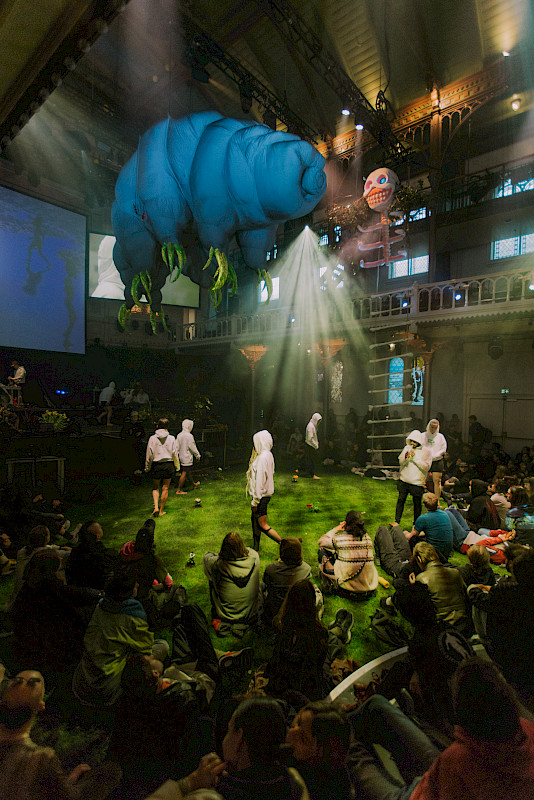
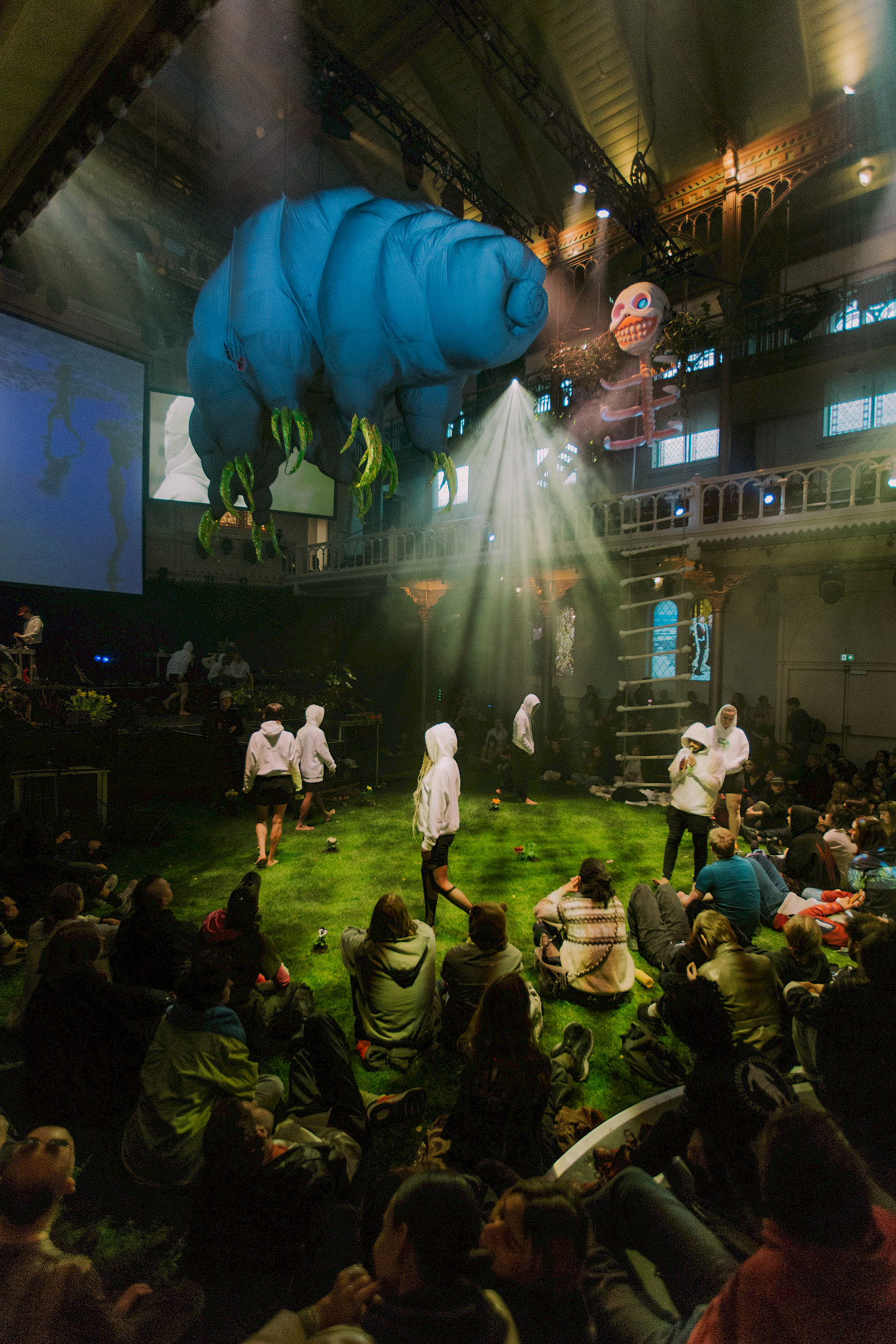
Entranced
Hanging from the ceiling of Paradiso, the former church turned concert hall, is a gigantic, luminous, inflatable tardigrade sculpture. Its metallic body – replete with neon-green, reflective talons – sways, buoyed by the booming bass of the performance below. Colloquially known as ‘water bears’ or ‘moss piglets’, these micro-animals are amongst the strangest and smallest creatures on the planet, able to survive freezing temperatures, crushing pressures, and even the vacuum of space. Blown up to an enormous size, this particular tardigrade is a set piece for TRANCE – the 12-hour long, operatic extravaganza directed by contemporary artist Tianzhuo Chen, aka Asian Dope Boys.
Featuring a sprawling cast of international musicians and performers, including ¥ØU$UK€ ¥UK1MAT$U, Dis Fig, Ylva Falk, Kasimyn and Ican Harem (of Gabber Modus Operandi), TRANCE unfolds over six chapters. Somewhere between a rock concert, an underground rave, an immersive theatre production, and a cinematic experiment, the show smashes linearity to pieces. When I enter Paradiso, the ensemble is handing out flowers, splashing in a heart-shaped pool of water, before being drenched in tears from an omnipotent eye suspended above the pulpit. The group is led by MC/shaman KIM KHAN, adorned in a flowing red cape and maniacally working his stack of analogue equipment – a mess of multicoloured patches, synths, and pedals. Transitioning into a new chapter, he swerves into hardstyle techno, the furious beats accompanied by Bedhaya-style dancing and Gamelan percussion. This momentum quickly peters out, however, replaced by soft, spoken word narration. Incense is handed out, and the atmosphere becomes reverent.
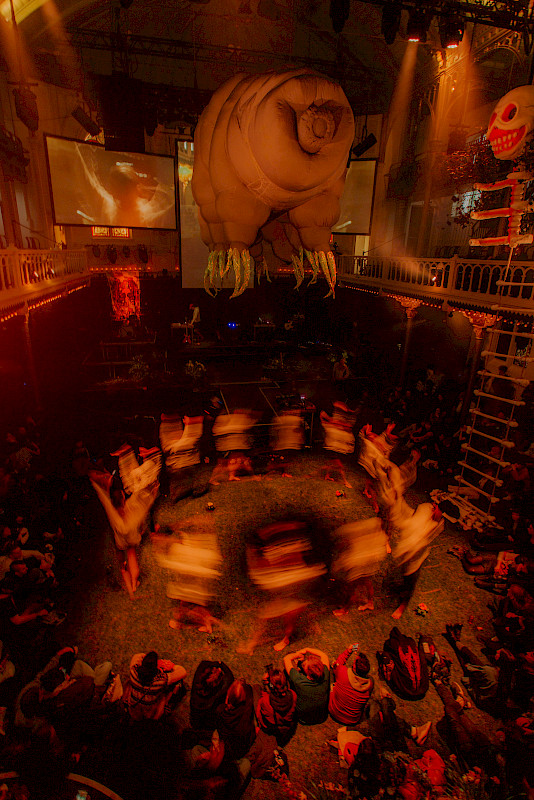
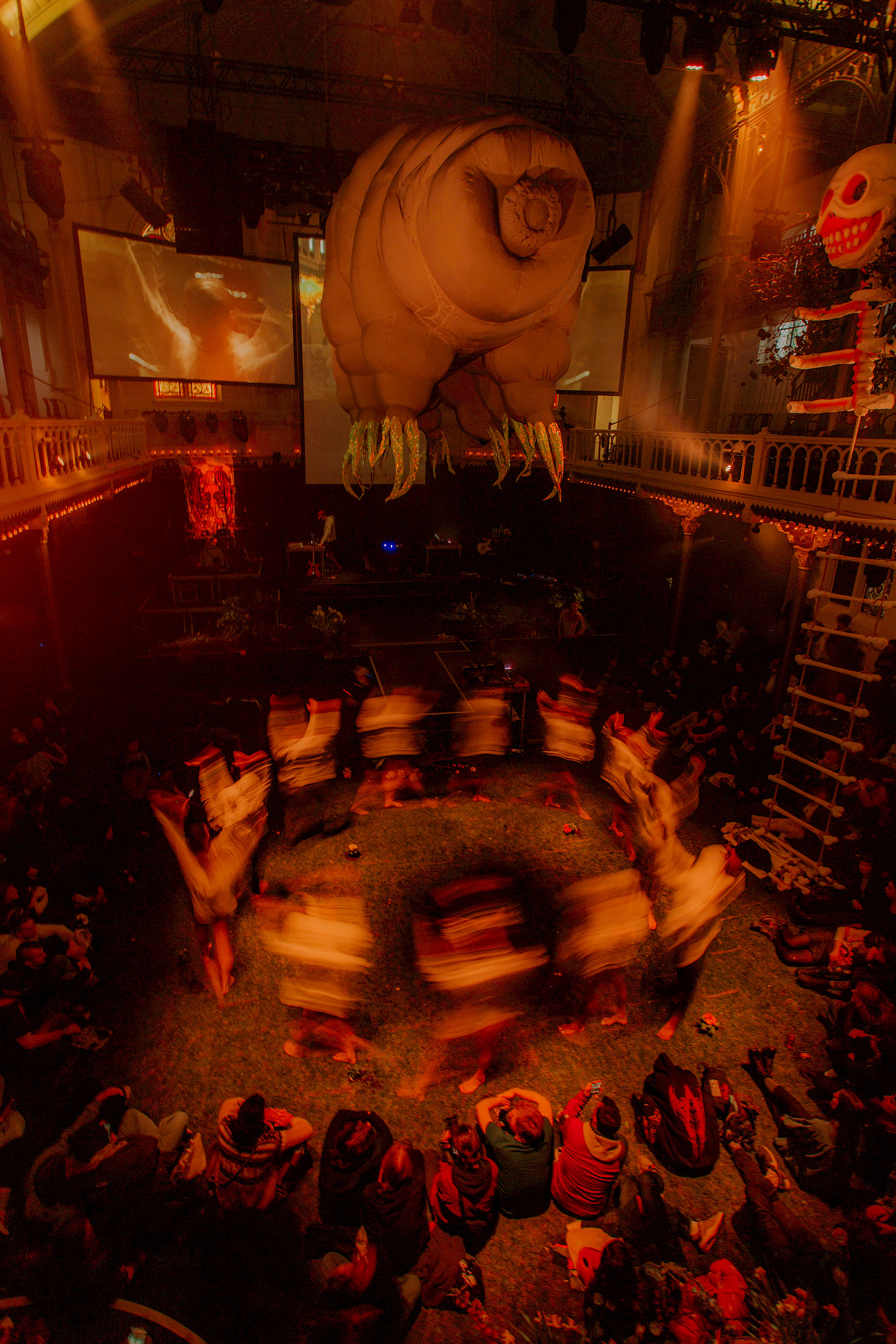
Repeatedly rising to a fever pitch and then collapsing into tense stasis, during TRANCE, the audience is invited to participate in a collective dancefloor ritual. The cast descends from the stage, falling, writhing, and moving through the crowd. At one point, large plates of food are brought in for everyone to share. Threading through its discordant narrative is the theme of death and incarnation. “Recite this six-syllable mantra,” preaches KIM KHAN, “You will not enter the path to lower re-birth and lower cyclical existence.” In another passage, joined by Felix-Florian Tödtloff's dread-inducing guitar riffs, he invites us to “Enter hell!”
Around midnight, Dis Fig takes to the stage – screaming, wailing, and screeching. Her cocktail of black metal and power electronics transcends to a place beyond words. The nexus point is the visceral, transformative power of her voice, drenched in reverb, emanating through every corner of the church. The howling reminds me of the Gaelic Celtic folk ritual of keening – a type of vocal lament traditionally given by women at funerals in Ireland and Scotland. Such shapeless yet meaningful sounds serve as reminders of the fundamental, communicative role of the body; a ragged breath, drawn through air-filled lungs, or a gut-wrenching sob caught in the back of the throat. These reconciliatory acts – mourning, keening, crying – allow us to collectively feel together in a world being torn apart. Grieving, according to the scholar Dana Luciano, has emerged as a temporal and affective state juxtaposed to progressive, mechanical time. She writes, “Grief was aligned with a sensibility that sought to provide time with a 'human' dimension, one that would be collective rather than productive, repetitive rather than linear, reflective rather than forward-moving.”(12) The disruptive act of mourning for the dead, she argues, withdraws us from the regular passage of life, placing us into a shared sense of ‘the sacred’. It is this that makes grieving such a significant part of worldmaking – of reimagining the way things are anew – and that provides hope of redemption.
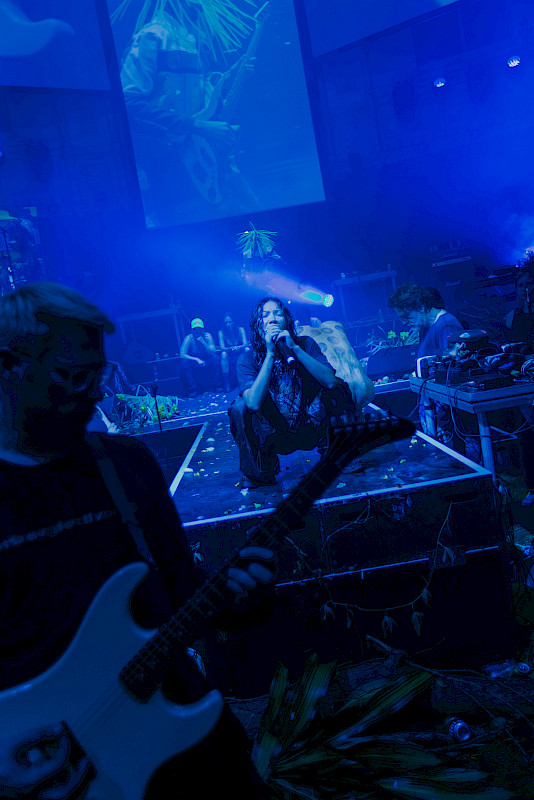
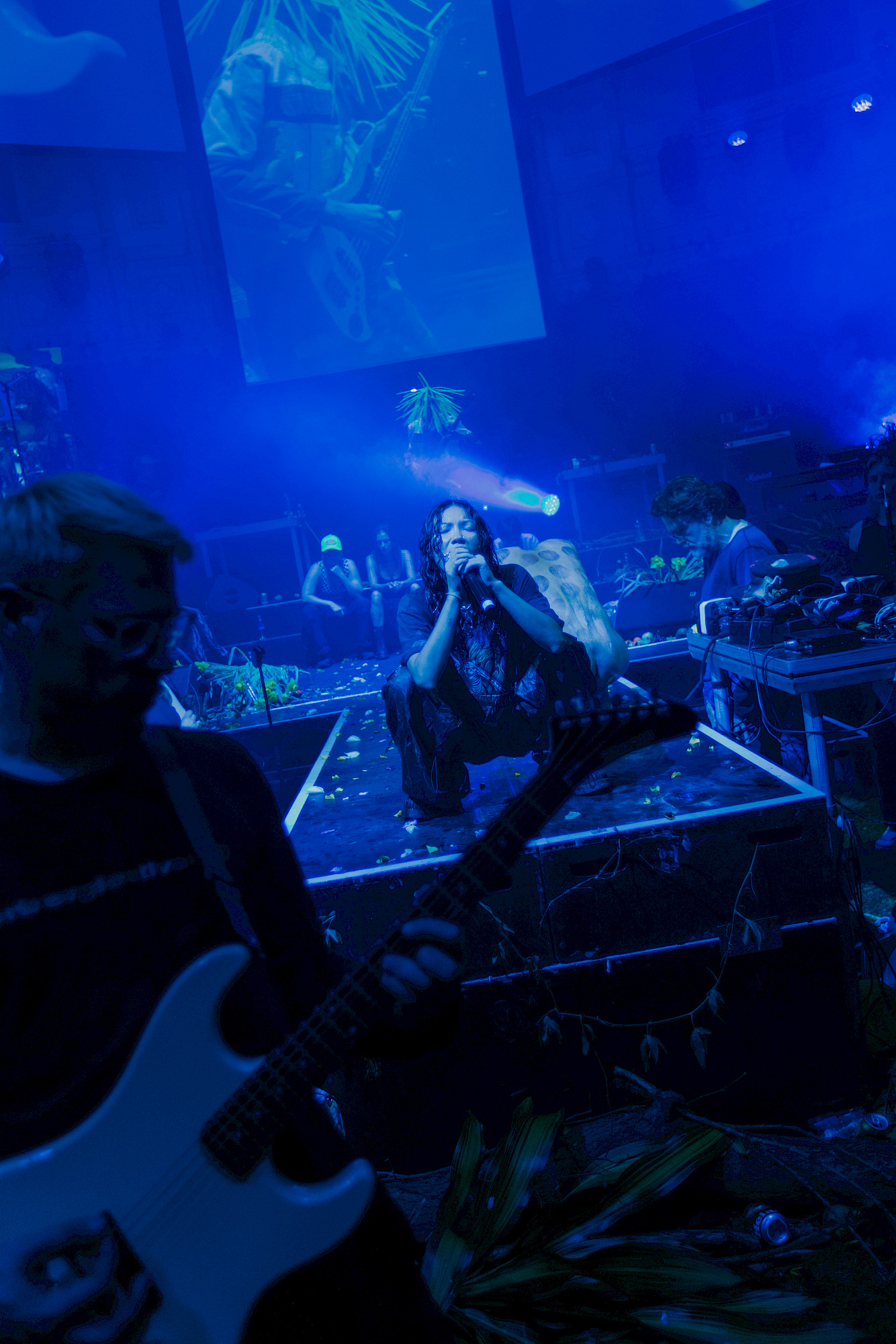
Worlding Otherwise
‘To come to your senses’ is a wonderful expression. In an age of climate collapse, it potently embodies a call to action. Conversely, surrounded by senseless and preventable death on all sides – from mass extinction to genocide – it feels as if what counts as ‘common sense’ is no longer sensical. Following the usual order of things, we continue to sell weaponry, drill for oil, and entrench systems of poverty and discrimination that impose early death. Facing this impasse can feel hopeless, but it is essential not to fall into what Haraway names “Prick Tales” – fatalistic discourse like ‘it’s all over’ or ‘it’s too late.’ Such rhetoric casts humanity as doomed, having wrought about its own end from the spectacle of its own hubris. As a counterpoint to this pessimistic outlook, The Spell of the Sensuous imagines an alternative route forwards, emphasising the becoming-with of language and the body, animals, plants, and mineral matter all churning together.
‘To come to your senses’ is a wonderful expression. In an age of climate collapse, it potently embodies a call to action. Conversely, surrounded by senseless and preventable death on all sides – from mass extinction to genocide – it feels as if what counts as ‘common sense’ is no longer sensical.
Throughout Abram’s book, there is an undeniable focus on ‘returning’ to a state that has come before – a moving backwards towards a period in human history and experience where the sensual realm was once paramount and has since been lost. But in the epoch of climate catastrophe, temporality is often non-linear. The past ruptures the present as pollution causes cancer to surface in bodies decades after being contaminated. Climate precarity is experienced both instantaneously as disasters such as fires and flash flooding, as well as imperceptibly as the global temperature climbs steadily over generations. A single-use plastic bag or chocolate bar wrapper will outlive humankind by millennia – the eternity of its longevity is nearly impossible to comprehend. The pastoral past that we might long for no longer exists (and perhaps never did in the first place). Facing this reality is tough – enough to make anyone go numb. But Abram’s imperative is to resist that temptation; to reject the desire to wall ourselves off. We must, as he urges, acknowledge, “the countless other organisms with whom we have Evolved”. Our bodies are evidence of this – formed in delicate reciprocity with the manifold textures, sounds, and shapes of the animate Earth; “our eyes have evolved in subtle interaction with other eyes, as our ears are attuned by their very structure to the howling of wolves and the honking of geese.” We are, as he concludes, human only in contact with what is not human. Touching otherness – the incomprehensible, spellbinding, or sublime – not only affirms and sustains us but constitutes the very essence of who we are.
1. David Abram, The Spell of the Sensuous: Perception and Language in a More-Than-Human World, (Vintage Books, 1996), p.46
2. Ibid
3. Pauline Oliveros, Quantum Listening, (Ignota Books, 2022), p. 29
4. Pauline Oliveros, Sonic Meditations, (Smith Publications, 1971), p.7
5. Interview with Jez riley French and Pheobe riley Law by Sonic Acts curator Maud Seuntjens during A.I. Worldings at Zone2Source, Amsterdam, 8 February 2024
6. Abram, The Spell of the Sensuous, p. 47
7. David Abram, ‘Magic and the Machine’, Emergence Magazine, 17 October 2018, https://emergencemagazine.org/essay/magic-and-the-machine/
8. Arash Akbari, presentation of Embedded/Embodied during A.I. Worldings at Zone2Source, Amsterdam, 8 February 2024
9. Abram, The Spell of the Sensuous, p.100
10. Ibid, p. 94
11. Donna Haraway, Staying with the Trouble, (Duke University Press, 2016), pp. 38-9
12. Dana Luciano, Arranging Grief: Sacred Time and the Body in Nineteenth-Century America, (New York University Press, 2009), p. 6
Concept behind the illustration and Sonic Acts visual identity by Anja Kaiser:
The visual identity that has been developed for The Spell of the Sensuous pays homage to Georgia O’Keeffe, an artist renowned for her mythic and uninhabited landscape masterpieces. Channelling her distinctive palette, the AI generated visuals employ earthly and lively hues hinting at images beyond human senses – a mystical entrancement in O’Keeffe’s landscapes or the liquid interconnectedness of (non)beings.
In her own words, remarking on the sensuously intimate and familial act of noticing nature, ‘in a way – nobody sees a flower – really – it is so small – we haven’t time – and to see takes time like to have a friend takes time.’
The typographic gesture assumes the roles of observer, chronicler, and perpetual traveler, traversing the linear notes of monospace typography. Intertwined with the typography, asemic writing play the role of silent companions. These signs defy conventional decryption methods, evading semantic clarity. Instead, they beckon us to embrace subjective, inquisitive interpretations, inviting us to delve into uncharted territories of understanding.
